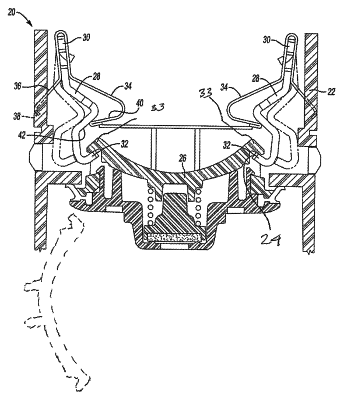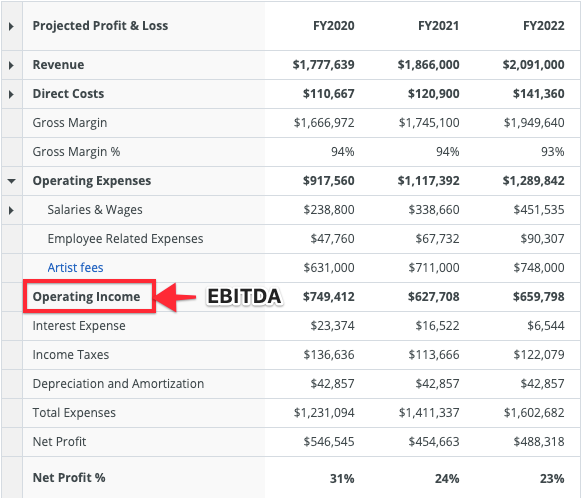Blog ›
The Endowment Effect on Buying and Selling of Goods


Research has identified “ownership” and “loss aversion” as the two main psychological reasons causing the endowment effect. The owner of this website may be compensated in exchange for featured placement of certain sponsored products and services, or your clicking on links posted on this website. This compensation may impact how and where products appear on this site .
- However, an endowment fund is a significant entity bestowed by individual donors or an organization, while a donation is a voluntary gift or contribution to charitable causes.
- By having a plan in place, investors can avoid getting emotionally attached to individual investments.
- An individual obtained a case of wine that was relatively modest in terms of price.
These include ensuring the financial health of specific departments, awarding scholarships or fellowships on the basis of merit to students, or providing assistance to students from a background of economic hardship. Other examples of the endowment effect include work by Ziv Carmon and Dan Ariely, who found that participants’ hypothetical selling price for NCAA final four tournament tickets were 14 times higher than their hypothetical buying price . Also, work by Hossain and List discussed in the Economist in 2010, showed that workers worked harder to maintain ownership of a provisionally awarded endowment meaning in economics bonus than they did for a bonus framed as a potential yet-to-be-awarded gain. In addition to these examples, the endowment effect has been observed using different goods in a wide range of different populations, including children, great apes, and new world monkeys. In an exchange paradigm, people given a good are reluctant to trade it for another good of similar value. For example, participants first given a Swiss chocolate bar were generally willing to trade it for a coffee mug, whereas participants first given the coffee mug were generally unwilling to trade it for the chocolate bar.
Various theories – including loss aversion, psychological inertia, and attachment – have been put forward to explain the endowment effect. There are several reasons behind it, like loss aversion, status quo, and psychological inertia. However, it is significant when people deal with objects of emotional attachment or symbolic value. The endowment effect definition in behavioral economics describes an individual’s affinity for objects they own or used against their preference for objects they have not previously owned or used. The other big lesson is that, once an investment policy is agreed upon, the smart people have to be allowed to execute it. This comes under the dry heading of “governance”, but it is crucial.
Understanding Endowments: Types and Policies That Govern Them
This course is presented by Alan Dix, a former professor at Lancaster University in the UK and a world-renowned authority in Human-Computer Interaction. Alan is also the author the university-level textbook “Human-Computer Interaction.” It is a short course designed to help you master the concepts and practice of designing for adoption and appropriation. It contains all the basics to get you started on this path and the practical tips to implement the ideas. Alan blends theory and practice to ensure you get to grips with these essential design processes.
In business and finance, the endowment effect has implications both for marketing and for investing. In the classic experiment done to confirm the endowment effect, participants were given a mug and then asked if they were willing to trade it for some Swiss candy that actually had a higher retail value. Despite such a fact, 80% of the participants were unwilling to make the trade. The foundation is Rhode Island’s largest philanthropic organization, with an endowment of more than $1.3 billion.
The school’s 2018 tax return showed $13.5 million in tuition revenue, $36 million in assets, and an $8.2 million endowment fund. The board of directors of an endowment fund may elect to use reserve funds, unrestricted gifts, or financial windfalls within the endowment fund. Many American universities have some of the most significant endowments. The community can measure a school’s financial health through its endowment size.
Endowment economy
An investor must be mindful in order to avoid the endowment effect. They must take deliberate action or take care to understand the assets they hold and the emotional ties they have to the goods. A week later, the professor asks all of the students to value the mug. The students who received the mug, on average, put a greater price tag on the mug than those who did not. When asked what would be the lowest selling price of the mug, the mug receiving students quote was consistently, and significantly, higher than the quote from the students who did not receive a mug. The endowment effect describes a circumstance in which an individual places a higher value on an object that they already own than the value they would place on that same object if they did not own it.
For example, a seller will not like to price a product below market value, while a buyer expects the rate to be following its worth. Motivate taste change theory implies that in the owner’s perception utility of an item increases after owning it and influences the decisions in the second purchase of the same item. An endowment can also refer to the total of a nonprofit institution’s investable assets, also known as its “principal” or “corpus,” which is meant to be used for operations or programs that are consistent with the wishes of the donor.
However, it can also occur merely because the individual possesses the object in question. Due to a fall in p1 the budget line AB rotates around the endowment point K (measuring a constant value). If he remains a supplier he will be worse off, as is indicated by point F which is on a lower indifference curve than the original indifference curve .

Ideally, you want them to appropriate your designs, too; you want the users to start using your designs in ways you didn’t intend or foresee. Sony’s Betamax, Coca-Cola’s New Coke, Pepsi’s Crystal Pepsi, and McDonald’s Arch Deluxe are among the most famous products which made it into production but failed to wow their audiences, according to Business Insider. In fact, Harvard Business Review dedicated a long piece to “Why most product launches fail”—so it’s not just big brands that aren’t getting their design process right but a lot of businesses and individuals, too.
For example, one study found that employees worked harder to ensure that they maintained their qualification for a bonus that had already been provisionally awarded to them than they did for a higher bonus that they could earn in the future. It leads potential customers in placing values for products and services irrationally. For instance, investors are holding on to stocks due to emotional attachment even if the evidence points to its underperformance in the future. For instance, they may devise strategies that attract customers, then leverage the endowment effect knowing it will be difficult for a consumer to leave. This type of behavior is typically triggered with items that have an emotional or symbolic significance to the individual.
Suppose a farmer goes to market with w1 units of tomato and w2 units of onions. He observes the prevailing prices and decides how much he wants to sell and how much to buy of the two goods. An endowment refers to the donations, property, and assets a nonprofit organization receives for generating investment income. When an endowment is first established, it typically comes with a set of guiding documents—such as a trust instrument or corporate resolution from a board of directors—that specify how the funds should be used. These documents may restrict the use of endowed funds entirely, or in some cases, may state that a portion of the principal balance can be used each year.
Most endowment funds have the following three components, which govern investments, withdrawals, and use of the funds. A more controversial third paradigm used to elicit the endowment effect is the mere ownership paradigm, primarily used in experiments in psychology, marketing, and organizational behavior. In this paradigm, people who are randomly assigned to receive a good (“owners”) evaluate it more positively than people who are not randomly assigned to receive the good (“controls”).
Connection-based, or “psychological ownership” theories
The model has, in effect, only one agent, whose actions are determined by a specification of preferences, endowments, and agent’s expectations. The intermediary is not part of the initial distribution of endowments, but his technology allows costless transformation of any good in his consumption good. Endowments are typically set up in the form of a trust, private foundation, or public charity. Endowments are mostly used by large institutions, such as colleges, universities, and health care organizations. But they can also be used by religious organizations, museums, libraries, and other nonprofits. An endowment consists of all the donations and money a nonprofit receives specifically to generate investment income.
Behavioral economists and behavior finance scholars explain such allegedly irrational behavior as a result of some sort of cognitive bias that warps the individuals thinking. In order to consistently use endowment funds, most endowment funds are invested into a variety of assets and have strict withdrawal and usage regulations. This includes an annual withdrawal limit, which is often a small amount. An endowment and a donation are similar as they are given to an institution by a donor.
The Endowment Effect on Buying and Selling of Goods | Microeconomics
In the aftermath of six major crises, beginning with the panic of 1907, endowments added significantly to their equity exposure. They also lightened their exposure in the run-up to the two big stockmarket busts of the 2000s. N THE WEEKS following the stockmarket crash in October 1987, the investment committee of Yale University’s endowment fund convened two extraordinary meetings. Just after the crash its newish chief investment officer, David Swensen, had bought up stocks paid for by sales of bonds.
And that in particular, Michael Hanemann in 1991, demonstrated that the endowment effect only appears to be present when exchanges of similar goods of equal value are being considered. The Endowment Model is taking us close to the next level of microeconomic theory. An elasticity less than one is said to be inelastic and the closer to zero, the lower the responsiveness. The MRS at 38,8 is farther away from the price ratio than the MRS at 35,10. The graph reveals that we moved to a lower indifference curve when we moved to 38,8. That makes sense because the consumer started with 35 units of good 1, but wants to have 38, so three more must be purchased.
The typical donation size of an endowment is generally much larger when compared to other charitable donations. It is because donors realize that large donations to an endowment are a way to fund the organization and support a cause they believe in for many years in the future, and hence their legacy as a donor is also kept alive. Yes, the endowment effect is a cognitive bias that impacts how individuals feel about the goods they already possess.
Categorías
Archivos
- octubre 2025
- septiembre 2025
- agosto 2025
- julio 2025
- junio 2025
- mayo 2025
- abril 2025
- marzo 2025
- febrero 2025
- enero 2025
- diciembre 2024
- noviembre 2024
- octubre 2024
- septiembre 2024
- agosto 2024
- julio 2024
- junio 2024
- mayo 2024
- abril 2024
- marzo 2024
- febrero 2024
- enero 2024
- diciembre 2023
- noviembre 2023
- octubre 2023
- septiembre 2023
- agosto 2023
- julio 2023
- junio 2023
- mayo 2023
- abril 2023
- marzo 2023
- febrero 2023
- enero 2023
- diciembre 2022
- noviembre 2022
- octubre 2022
- septiembre 2022
- agosto 2022
- julio 2022
- junio 2022
- mayo 2022
- abril 2022
- marzo 2022
- febrero 2022
- enero 2022
- diciembre 2021
- noviembre 2021
- octubre 2021
- septiembre 2021
- agosto 2021
- julio 2021
- junio 2021
- mayo 2021
- abril 2021
- febrero 2021
- enero 2021
- diciembre 2020
- noviembre 2020
- octubre 2020
- septiembre 2020
- agosto 2020
- julio 2020
- junio 2020
- mayo 2020
- abril 2020
- marzo 2020
- febrero 2020
- enero 2019
- abril 2018
- septiembre 2017
- noviembre 2016
- agosto 2016
- abril 2016
- marzo 2016
- febrero 2016
- diciembre 2015
- noviembre 2015
- octubre 2015
- agosto 2015
- julio 2015
- junio 2015
- mayo 2015
- abril 2015
- marzo 2015
- febrero 2015
- enero 2015
- diciembre 2014
- noviembre 2014
- octubre 2014
- septiembre 2014
- agosto 2014
- julio 2014
- abril 2014
- marzo 2014
- febrero 2014
- febrero 2013
- enero 1970
Para aportes y sugerencias por favor escribir a blog@beot.cl